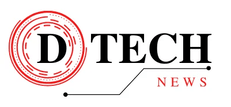# Massive Git Config Breach: 15,000 Credentials Exposed & 10,000 Repositories Cloned!
In a disconcerting revelation that has sent shockwaves through the tech community, a massive security breach involving Git configuration files has surfaced. This breach has not only exposed 15,000 critical credentials but has also led to the unauthorized cloning of 10,000 private repositories. This unfolding incident highlights the persistent vulnerabilities in our digital infrastructures and underscores the necessity for increased vigilance in protecting our digital assets.
## Understanding the Risk: Git Configuration Files as a Silent Threat
The breach was uncovered through a detailed examination of publicly exposed Git configuration files, also known as `.git/config` files. These files typically contain crucial details such as usernames, passwords, and tokens, which are essential for accessing various systems. When these configurations are exposed online, they present severe security risks as malicious actors can leverage these details to gain unauthorized access.
### Why Are .git/config Files So Hazardous?
.git/config files, often overlooked in terms of security, become significant threats when unwittingly exposed. These files often harbor credentials that grant access not just to repositories, but potentially to other linked systems. This recent breach serves as a powerful reminder of the need for developers to continually review and enhance their security practices, particularly when handling sensitive projects.
## Consequences Amplified: 10,000 Private Repositories Compromised
The exposure of credentials has led to a grave consequence—the unauthorized cloning of 10,000 private repositories. This incident not only jeopardizes the intellectual property of numerous organizations but also risks the exposure of sensitive code, confidential business logic, and potentially exploitable vulnerabilities.
### Evaluating the Risks of Repository Exposure:
– Intellectual Property Theft: Proprietary software and unique algorithms could be appropriated by malicious actors.
– Data Leakage: Sensitive information, such as databases or API keys, might be embedded within the code.
– Security Vulnerabilities: Exposed code increases the risk of exploitation by malicious actors.
## Implementing Mitigation Strategies: How to Secure Git Repositories
Despite the alarming nature of the breach, it also highlights the need for individuals and organizations to reassess their security protocols. Here’s how to ensure a more fortified defense against similar breaches:
### Best Practices for Securing Git Configurations:
– Use Access Controls: Employ strict access policies and favor SSH keys over passwords wherever feasible.
– Regularly Rotate Credentials: Change your passwords and tokens frequently to reduce exposure risks.
– Utilize Environment Variables: Store sensitive information like passwords and API keys in environment variables instead of in code.
– Code Review and Audits: Conduct regular code audits to identify and rectify any security breaches early on.
## Advancing Forward: Prioritizing Code Security
As developers and organizations navigate the digital frontier, ensuring the security of code must be prioritized. The recent Git config breach is a crucial learning point, emphasizing the urgent need for rigorous security measures. By embracing best practices and regularly updating security protocols, we can guard against such breaches in the future.
In conclusion, while the mass cloning of 10,000 repositories might be the latest in a series of wake-up calls, it is imperative for the tech community to unite in cultivating a culture of cybersecurity awareness. As we adopt new technologies and methodologies, vigilance and proactive defense must guide our journey at every step.
### Stay Informed, Stay Secure! 🚀
For more updates on cybersecurity and insights on safeguarding your digital assets, follow our blog and join the discussion in the comments section below!
The importance of securing our digital environments cannot be overstated. In an era where data is a prized asset, the measures taken now to protect that data will determine the security landscape of the future. Let this be a call to action for all involved in the digital domain, urging us to adopt the most robust security protocols available.





















































